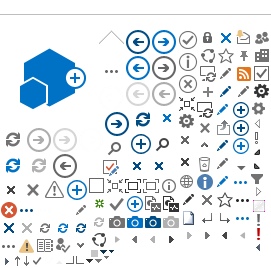Overview
Overview Your heart is divided into two separate pumping systems, the right side and the left side.
The right side of your heart receives oxygen-poor blood from your veins and pumps it to your lungs, where it picks up oxygen and gets rid of carbon dioxide. The left side of your heart receives oxygen-rich blood from your lungs and pumps it through your arteries to the rest of your body. Your heart has four separate chambers (Figure 1) that pump blood, two on the right side and two on the left.
How the heart's pumping system works Your heart (Figure 2) is divided into two separate pumping systems, the right side and the left side. Blood is pumped through your heart and lungs in four steps:
The right atrium receives oxygen-poor blood from the body and pumps it to the right ventricle through the tricuspid valve. The right ventricle pumps the oxygen-poor blood to the lungs through the pulmonary valve. The left atrium receives oxygen-rich blood from the lungs and pumps it to the left ventricle through the mitral valve. The left ventricle pumps the oxygen-rich blood through the aortic valve out to the rest of the body. Figure 1 - Chambers of the heart The heart has four chambers: two atria and two ventricles.
The right atrium receives oxygen-poor blood from the body and pumps it to the right ventricle. The right ventricle pumps the oxygen-poor blood to the lungs. The left atrium receives oxygen-rich blood from the lungs and pumps it to the left ventricle. The left ventricle pumps the oxygen-rich blood to the body. Current as of: July 31, 2024
Author: Ignite Healthwise, LLC StaffClinical Review Board
Figure 2 - Normal Heart These pictures show the heart from the front. The right side of the heart is on the left side of the heart pictures. The left side of the heart is on the right side of the pictures.
Your heart has four separate chambers that pump blood. The chambers are called the right atrium, right ventricle, left atrium, and left ventricle. The right and left sides of the heart are separated by a muscular wall that prevents blood without oxygen from mixing with blood that has oxygen. The heart also has valves that separate the chambers and connect to major blood vessels.
Your heart is divided into two separate pumping systems, the right side and the left side.
The right side of your heart receives oxygen-poor blood from your veins and pumps it to your lungs, where the blood picks up oxygen and gets rid of carbon dioxide. The left side of your heart receives oxygen-rich blood from your lungs and pumps it through your arteries to the rest of your body.
Blood travels through your heart and lungs in four steps:
The right atrium receives oxygen-poor blood from the body and pumps it through the tricuspid valve to the right ventricle. The right ventricle pumps the oxygen-poor blood through the pulmonary valve to the lungs. The left atrium receives oxygen-rich blood from the lungs and pumps it through the mitral valve to the left ventricle. The left ventricle pumps the oxygen-rich blood through the aortic valve out to the rest of the body. Current as of: July 31, 2024
Author: Ignite Healthwise, LLC StaffClinical Review Board
Related Information
Credits
Current as of: July 31, 2024
